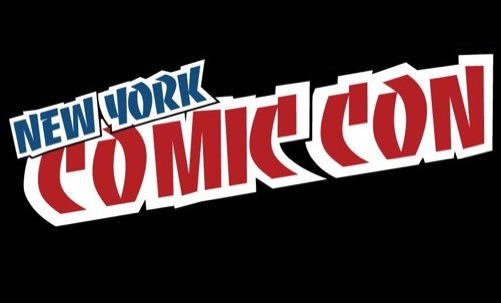At the #YesAllGeeks panel! pic.twitter.com/CxDudFFTfE — Victoria McSpoopy (@vqnerdballs) October 11, 2014
Con-goers returned to the same room on Saturday to see “#YesAllGeeks: Let’s Talk About Harassment In Fandom.” This panel, led by Tor Books editor and Beyond Victoriana blogger Diana Pho, focused specifically on how to call out harassment within the geek community. The panelists included writer Mikki Kendall; RN and Nurse Practitioner Robert Anders; Tor’s Emily Asher Perrin; comics.tumblr.com’s Editor in Chief, Marlene Bonnelly; and #YesAllWomen creator Kaye M, who contributed to the panel and the #YesAllGeeks hashtag remotely on Twitter. (You can watch the full panel in its entirety online at the Beyond Victoriana website as well.)
To begin the panel, Pho laid down some general trigger warnings and invited audience members to feel free to leave the room at any point if things got too intense for them, which set a very important and welcoming tone for the discussion to follow. She then put the following disheartening statistics up on the screen next to the stage, as sourced by Bitch Magazine, Game Skinny, Transequality.org, and the National Coalition of Anti-Violence Programs, respectively:
- 25% of women at comic/pop culture conventions report being sexually harassed
- 13% of people attending comic conventions report having unwanted comments of a sexual nature made about them at conventions. 8% of people of all genders reported they had been groped, assaulted, or raped at a comic convention.
- 53% of all transgender/ non-binary individuals reported verbal harassment in places of “public accommodation”; this includes hotels, restaurants, buses, public spaces.
- LGBTQ people of color were 1.82 times as likely to experience physical violence compared to white LGBTQ people. Transgender people were 1.67 times as likely to experience threats and intimidation compared to LGBTQ non-transgender survivors and victims.
Obviously harassment is a huge problem, then, particularly for marginalized people. But how does harassment differ from bullying? Both involve “making sure that someone doesn’t feel like a person,” Mikki Kendall noted, but with harassment it’s often done at the individual level and “mostly there are no witnesses—that’s kind of the point.”
Both Kendall and Robert Anders also brought up the idea of “The Missing Stair,” a term first coined in a article on The Pervocracy. If someone engages in harassment, both explained, they’re usually the type to do it over and over again within a community, and only get away with it because those who are affected become so accustomed to the abuse that it doesn’t even occur to them to speak up. Sometimes when victims do speak their experiences are hand-waved away as “personal drama,” Kendall said, but they can also inspire other victims will come forward with their own stories as well.
So how can communities make themselves safer for harassment victims, particularly in fandom circles? Start from a place of believing in the victim, said Kendall. If they’re lying, the truth will undoubtedly come out, but often the power differential between victims and harassers is what gives them those people opportunity to victimize others in the first place. It can be difficult to acknowledge that “your fave” might be capable of doing something terrible, and that’s often what they’re counting on. Not allowing their influence in the community to cloud your judgement often allows other victims to feel safer in coming forward.
Emily Asher Perrin also cited the “Cosplay is Not Consent” signs found throughout NYCC in particular, saying that signage can be important for accountability. Other panelists agreed: If you put up a sign saying what is or isn’t allowed, other panelists agreed it might not stop harassment from happening, but it will give you something to point to when it does happen—so long as you enforce that code of conduct, of course, as having a policy and not enforcing it can often be much more damaging to victims.
Robert Anders also brought up that it’s especially important to make sure that you yourself are safe when engaging harassers on behalf of someone else. “It’s 2014 and we all carry recording devices around,” he pointed out, holding up his phone. If you’re witness to some kind of harassment, creating an impartial record of it can help to alleviate the “he said, she said” nature of many call-outs.
But the biggest thing to note when calling our harassment is that it’s not about you or how you feel—it’s about the person who’s being harassed feels. Perrin said to make sure you check in on them and ask “Are you okay?” if only to let them know that someone else sees what’s happening to them. Kendall also mentioned later in the panel that it’s important not to re-traumatize the victim by continuing to press the issue after they feel it necessary for them to move on: “when the victim is done, you’re done.”
It’s this emphasis on listening to the victim is the biggest thing that we can take away from both #YesAllGeeks and the End Bullying Panel, as a matter of fact: the better we become at allowing the people who are facing harassment or bullying to speak up about their experiences without judging them or expecting them to be perfect, the more we’re able to tell harassers, whether directly or indirectly, that the behavior they engage in isn’t okay. It may not feel like you’re doing anything when you condemn harassment on an individual level, but when a lot of people are doing the same thing, it adds up—and the fact that it’s such a widespread topic of discussion now when it’s been ignored and swept under the rug for so long proof that it’s possible for things to change. We just need to keep listening.
Are you following The Mary Sue on Twitter, Facebook, Tumblr, Pinterest, & Google +?









Published: Oct 15, 2014 08:00 pm